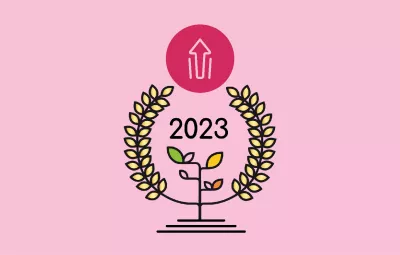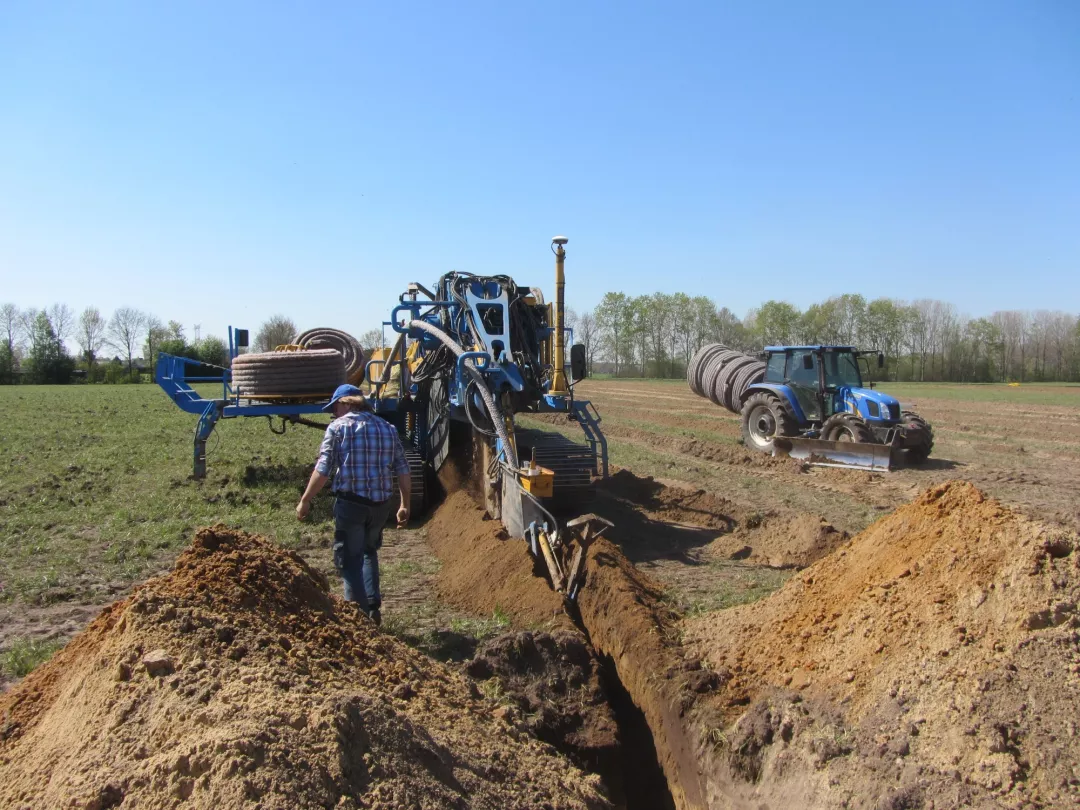General information
RDP Priority
- P6. Social inclusion and local development
RDP Focus Area
- 6B: Local development
RDP Measure
- M19: LEADER/CLLD
Beneficiary type
- Non-governmental organisation
Summary
Since 2016, farmers in Flanders have been experiencing very dry summers. As groundwater levels have been declining for years, the capacity of the soil to buffer the crop water demand in dry periods has declined. However, many fields have a subsurface drainage system and, at many locations, high quality treated wastewater streams are available. Using this treated wastewater can reduce or eliminate the need for surface irrigation by raising the groundwater table and restoring the capillary rise of groundwater to the root zone of the crops.
This approach was tested (2020-23). During an extremely dry summer (2022), the subirrigation system totally eliminated the need for surface irrigation. Groundwater levels on the field and in the area around the field improved. The environmental quality was closely monitored. No adverse effects were detected.
The approach shows that there is a lot of potential to combat drought and replenish the depleted groundwater stocks in the region.
Results
- The project succeeded in eliminating the need for surface irrigation during the growing season of 2022.
- 780 mm of treated wastewater was infiltrated into the field. Calculations with a soil water balance model indicate that approximately 30% of this water volume migrated to the root zone of the crop, considerably increasing the yield.
- The result was a significant increase in the groundwater table. On the project site, surplus ground water levels were raised 20-25 centimetres higher, with no adverse effects on groundwater and soil quality identified so far.
- The area was also visually a veritable ‘green oasis’ during the dry summer of 2022, leading to interest from farmers in the approach.
- Other stakeholders are researching a similar system using surface water on an area of more than 160 hectares, an unprecedented scale in Belgium.

Promoter
Soil Service of Belgium
Funding
Total budget: 404 749.15 (EUR)
EAFRD: 131 543.48 (EUR)
National/Regional: 131 543.47 (EUR)
Private/Own funds: 141 662.20 (EUR)
Resources
Documents
Links
Context
In recent decades, the groundwater reserves in Flanders have been markedly depleted in many regions. This affects both farmers and the wider environment. The summer droughts from 2016 onwards have led to a widespread acknowledgement by farmers that measures must be taken to conserve valuable water in the fields. However, there are still many questions about the appropriate techniques and their applicability.
At the same time, there are many places in Flanders where high quality treated wastewater is produced, both by industry and by municipal wastewater treatment stations. Often, this water is released into the nearby surface water system and most of it flows away towards the North Sea and is thus lost to our water system.
At Kinrooi, in north east Flanders, the wastewater treatment station produces around 750 000 m³ of treated wastewater each year and releases it into the nearby stream. Analysis shows that the water quality is comparable to irrigation water. The average groundwater table depth has markedly decreased in this region, by more than one metre since the 1960s. The project initiated a pilot study on a farmer’s field adjacent to the wastewater treatment station to examine the potential of using this water to replenish the depleted groundwater levels in the region and to supply the farmer with a strong subsurface water buffer to combat the severe droughts that are more and more common in the region.
Objectives
The project aimed to reduce or eliminate the need for surface irrigation by raising the groundwater table and restoring the capillary rise of groundwater to the root zone of the crops. The approach was to replenish the depleted groundwater reserves in the region by re-routing the high quality treated wastewater from the surface water system to the groundwater. This pilot initiative sought to ensure that there are no adverse effects of using treated wastewater on the environmental quality of soil, water and plants.
Activities
The first step was to set up an extensive monitoring network of the groundwater and soil so as to be able to measure the impact of the subirrigation with treated wastewater on environmental quality. Then, the existing drainage system on a pilot field site of five hectares was converted to a state-of-the-art subsurface irrigation system. This subirrigation system was tested in the extremely dry growing season of 2022, infiltrating more than 20 000 m³ of water in total, and the impact of the subirrigation on crop performance was monitored. Furthermore, the impact of the subirrigation on water quantity (meaning groundwater table rise) and quality was monitored to ensure that no adverse effects resulted from the use of treated wastewater. The subirrigation system and project results were shown to farmers, policymakers and researchers.
The agricultural community is involved in the project in several ways. The farming family Bongers own the pilot study site and Frank Bongers, his wife, daughter and son are closely involved with the project. Project planning and results are discussed with a core group of 12 farmers from the immediate neighbourhood, as the project activities could also impact their fields and, in the future, the hope is that they could also make use of the treated wastewater for subirrigation purposes.
The project regularly communicates to the wider Flemish agricultural community through comprehensive articles in publications of the farmers’ associations in Flanders. Project planning and results are discussed in a steering committee, consisting of policymakers, farmers and other researchers. The project maintains close contact with the Flemish Environmental Agency to discuss the environmental quality aspects of this pilot study. Direct communication is ongoing with researchers from the Netherlands, who have set up a similar pilot study at the site of Haaksbergen.
Main results
The project succeeded in eliminating the need for surface irrigation during the growing season of 2022, increasing crop performance and reducing the need for labour- and time-intensive surface irrigation. In the summer of 2022, 780 mm of treated wastewater was infiltrated into the field. Calculations with a soil water balance model indicate that approximately 30% of this water volume migrated to the root zone of the crop. For grass, this water volume accounts for an extra 3.5 to 7 tonnes of dry matter yield per hectare.
The result was a significant increase in the groundwater table, both on the project site field and in the surrounding area. Monitoring is ongoing but, on the field itself, surplus ground water levels due to subirrigation were raised 20-25 centimetres higher, with no adverse effects on groundwater and soil quality identified so far.
Furthermore, the sub-irrigated area was also visually a veritable ‘green oasis’ during the dry summer of 2022. The crop benefits were much greater than the farmers had anticipated, with the result that the scepticism which was prevalent at the start of the project turned to enthusiasm during the summer of 2022.
The project is paving the way for subirrigation. Many farmers have contacted the project and support for subirrigation across Flanders is growing. Contact is ongoing with other stakeholders (Franken Agro, Boerennatuur Vlaanderen, Soil Service of Belgium, VITO), who are researching a similar system using surface water on an area of more than 160 hectares, an unprecedented scale in Belgium.
Key lessons
A significant positive effect on crop production can be achieved with relatively low volumes of subirrigation. Groundwater levels also react well to the subirrigation, replenishing the groundwater depletion of the past decades. The potential for wider subirrigation is significant. No adverse effects on soil and water quality during the first two years have been detected.
The project anticipated an irrigation efficiency of about 10% (10% of the infiltrated water moving up to the crop root zone and 90% percolating downwards to replenish the groundwater). However, results from 2022 indicate that the efficiency is closer to 30%, a welcome surprise for both the farmers and the researchers. The amount and quality of the water sources are very important for subirrigation. These must be determined at the start. Most existing subsurface drainage systems can be converted to subirrigation systems. However, very old systems are often not suitable.
Contact Information
W. De Croylaan 48, 3001 Heverlee, Belgium
Tom Coussement

